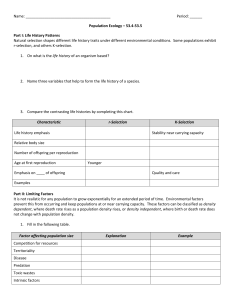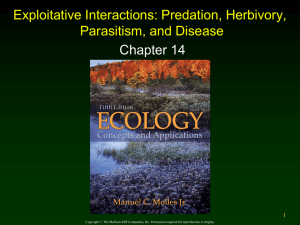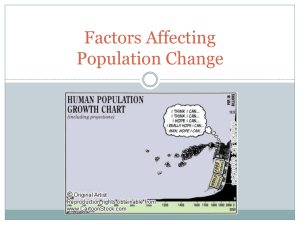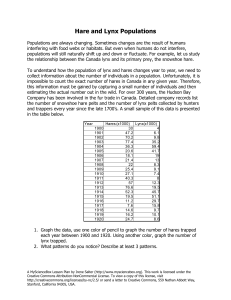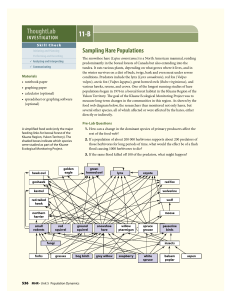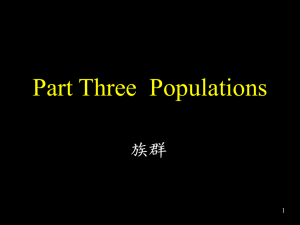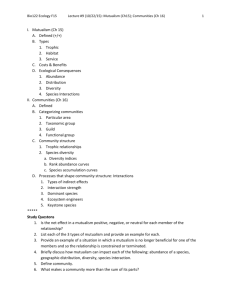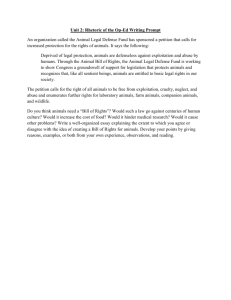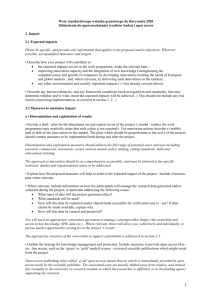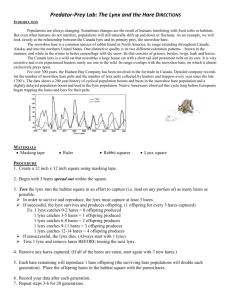Mar21b
advertisement
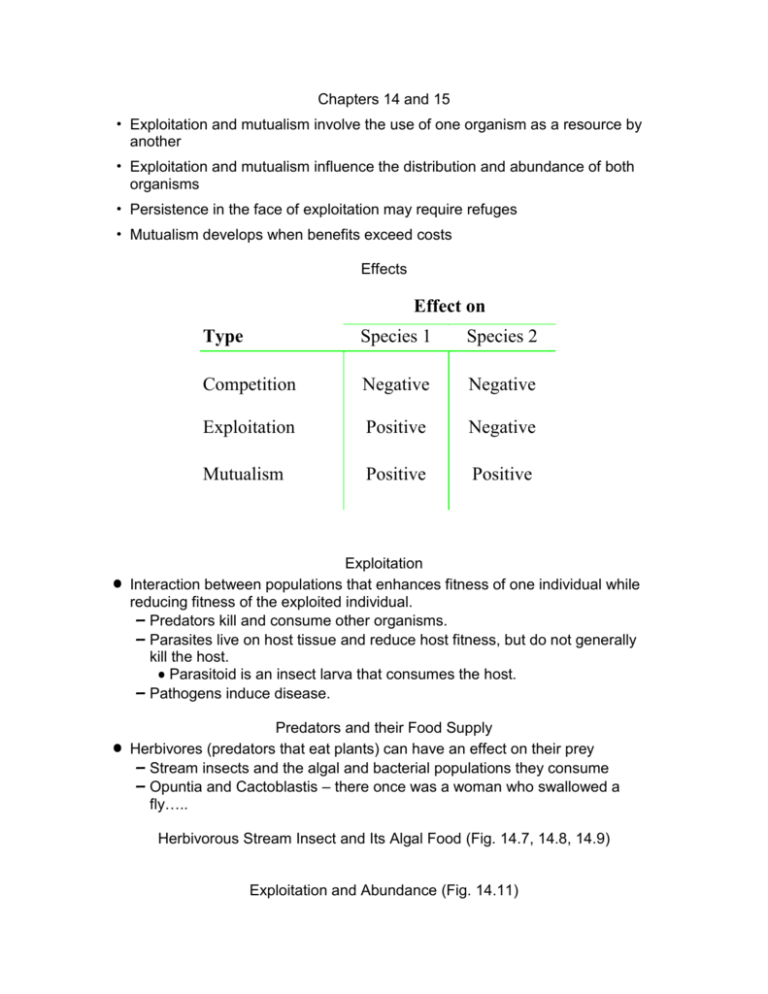
Chapters 14 and 15 • Exploitation and mutualism involve the use of one organism as a resource by another • Exploitation and mutualism influence the distribution and abundance of both organisms • Persistence in the face of exploitation may require refuges • Mutualism develops when benefits exceed costs Effects Effect on • • Type Species 1 Species 2 Competition Negative Negative Exploitation Positive Negative Mutualism Positive Positive Exploitation Interaction between populations that enhances fitness of one individual while reducing fitness of the exploited individual. – Predators kill and consume other organisms. – Parasites live on host tissue and reduce host fitness, but do not generally kill the host. • Parasitoid is an insect larva that consumes the host. – Pathogens induce disease. Predators and their Food Supply Herbivores (predators that eat plants) can have an effect on their prey – Stream insects and the algal and bacterial populations they consume – Opuntia and Cactoblastis – there once was a woman who swallowed a fly….. Herbivorous Stream Insect and Its Algal Food (Fig. 14.7, 14.8, 14.9) Exploitation and Abundance (Fig. 14.11) • Introduced Cactus and Herbivorous Moth – Mid 1800’s: prickly pear cactus Opuntia stricta was introduced to Australia. – Established populations in the wild. – Government asked for assistance in control. – Moth Cactoblastis cactorum found to be effective predator. – Reduced by 3 orders of magnitude in 2 years. – Cyclic stability now in metapopulations Exploitation and Abundance Cycles of Abundance in Hares and Lynx (Fig. 14.14) • Snowshoe Hares (Lepus americanus) and Lynx (Lynx canadensis). – Extensive trapping records. • • Cycles of Abundance in Snowshoe Hares and Their Predators Elton proposed abundance cycles driven by variation in solar radiation. Keith suggested overpopulation theories: – Decimation by disease and parasitism. – Physiological stress at high density. – Starvation due to reduced food. Snowshoe Hares - Role of Food Supply • Live in boreal forests dominated by conifers. – Dense growth of understory shrubs. • In winter, browse on buds and stems of shrubs and saplings such as aspen and spruce. – One population reduced food biomass from 530 kg/ha in late Nov. to 160 kg/ha in late March. • Shoots produced after heavy browsing can increase levels of plant chemical defenses. – Reduces usable food supplies. • • Snowshoe Hares - Role of Predators Single source theory – Lynx (Classic specialist predator) – Predation can account for 60-98% of mortality during peak densities. Complementary factors – Hare populations increase, causing food supplies to decrease. – Starvation and weight loss may lead to increased predation – Effect is todecrease hare populations. Experimental Evidence (Fig. 14.15)
